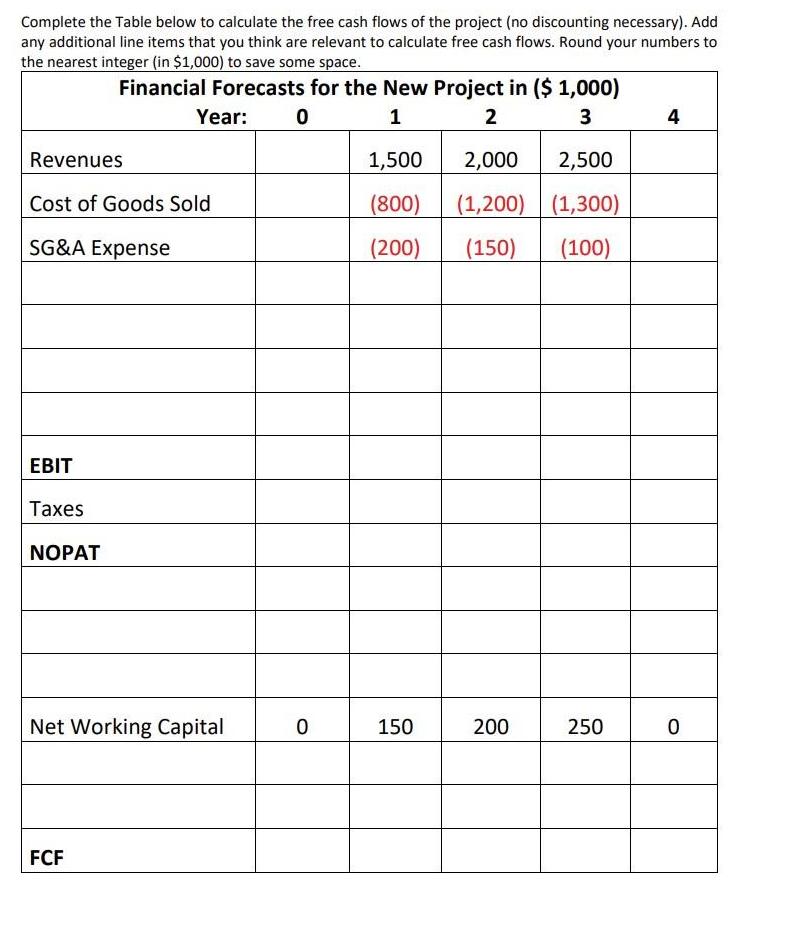Question
You are a financial manager for BPI Inc. and are asked to evaluate a potential investment opportunity by the senior manager of the R&D division.
You are a financial manager for BPI Inc. and are asked to evaluate a potential investment opportunity by the senior manager of the R&D division. Key information about the project is given in the table below. Additional information is as follows:
The project won’t generate any revenues, costs of goods sold, or SG&A expenses after year 3.
It will take a team of 10 engineers 3 months to get the project started. Engineers at BPI are typically paid upfront for projects and the average monthly salary of an engineer working for BPI is $8,500. The salary of the engineers is considered an R&D expense.
The project will require an upfront investment in additional machinery of $600,000 today. The machinery will be depreciated over 4 years using straight line depreciation starting at the end of year 1.
In year 4 the machinery will need to be disposed of, which will generate a disposal cost of $50,000 that can be expensed for tax purposes.
The marginal tax rate of BPI is 21% and BPI as a firm is expected to generate at least $10 million of pre-tax income each year for the next six years, regardless of whether it takes the new project or not.
The appropriate interest rate to discount free cash flows is 11%
A midyear adjustment is not necessary.
To get more information about the project you have a meeting with the senior manager of the R&D division. In that meeting you learn that the R&D division has already built a prototype for this project in order to determine its feasibility and that the prototype cost $200,000 to develop. Moreover, you are being told that BPI will not hire additional engineers but will use in-house engineers that are currently employed by BPI. The senior manager of R&D claims that using in-house engineers will help “increase the profitability of the project since they are already on the company’s payroll”.

Complete the Table below to calculate the free cash flows of the project (no discounting necessary). Add any additional line items that you think are relevant to calculate free cash flows. Round your numbers to the nearest integer (in $1,000) to save some space. Financial Forecasts for the New Project in ($ 1,000) Year: 0 1 2 3 1,500 2,000 2,500 (800) (1,200) (1,300) (200) (150) (100) Revenues Cost of Goods Sold SG&A Expense EBIT Taxes NOPAT Net Working Capital FCF 0 150 200 250 4 0
Step by Step Solution
3.45 Rating (164 Votes )
There are 3 Steps involved in it
Step: 1
The cost for the prototype is a sunk cost and will not be included The salary for the engineers is ...
Get Instant Access to Expert-Tailored Solutions
See step-by-step solutions with expert insights and AI powered tools for academic success
Step: 2

Step: 3

Ace Your Homework with AI
Get the answers you need in no time with our AI-driven, step-by-step assistance
Get Started


